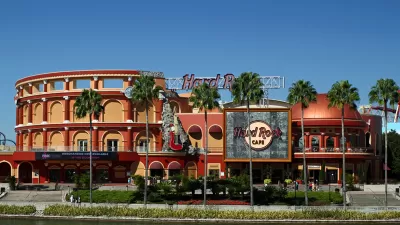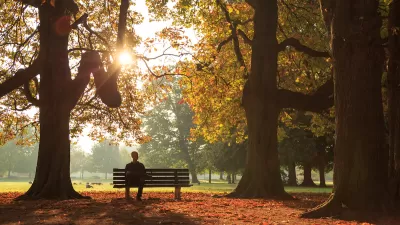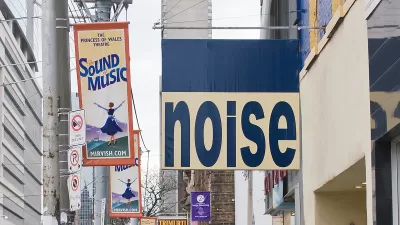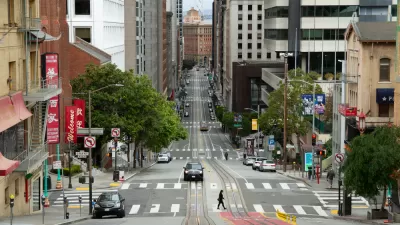One man's noise pollution is another man's symphony.

Citylab profiles the work of composer Tod Machover, who uses the noise of city streets to create fullblown symphonies. He's worked in Toronto, Edinburgh, and Detroit, and will soon complete pieces in Miami and Philadelphia.
In the tradition of musique concrète, each piece is composed of thousands of sounds, often recorded and submitted by residents. Those submissions are then mixed, and sometimes accompanied by a symphony orchestra. The result is an "audio portrait" unique to the city.
Sometimes, it’s about incorporating the sounds that reflect a city’s history. Detroit, for example, was famously dubbed the Motor City for being the heart of America’s auto manufacturing industry. So Machover asked the community to send in recordings of different car engines, which he merged with Motown riffs, in homage to the city’s music scene.
Currently, Machover is partnering with the New World Symphony in Miami. There, he anticipates combining natural sounds from the beach as well as clips of street conversations—"a way of capturing the diasporas within Miami."
Watch a performance of Detroit’s Symphony in D here, or submit your sounds to the Miami project here.
FULL STORY: Turning Street Noise Into a City Symphony

Planetizen Federal Action Tracker
A weekly monitor of how Trump’s orders and actions are impacting planners and planning in America.

Maui's Vacation Rental Debate Turns Ugly
Verbal attacks, misinformation campaigns and fistfights plague a high-stakes debate to convert thousands of vacation rentals into long-term housing.

San Francisco Suspends Traffic Calming Amidst Record Deaths
Citing “a challenging fiscal landscape,” the city will cease the program on the heels of 42 traffic deaths, including 24 pedestrians.

Amtrak Rolls Out New Orleans to Alabama “Mardi Gras” Train
The new service will operate morning and evening departures between Mobile and New Orleans.

The Subversive Car-Free Guide to Trump's Great American Road Trip
Car-free ways to access Chicagoland’s best tourist attractions.

San Antonio and Austin are Fusing Into one Massive Megaregion
The region spanning the two central Texas cities is growing fast, posing challenges for local infrastructure and water supplies.
Urban Design for Planners 1: Software Tools
This six-course series explores essential urban design concepts using open source software and equips planners with the tools they need to participate fully in the urban design process.
Planning for Universal Design
Learn the tools for implementing Universal Design in planning regulations.
Heyer Gruel & Associates PA
JM Goldson LLC
Custer County Colorado
City of Camden Redevelopment Agency
City of Astoria
Transportation Research & Education Center (TREC) at Portland State University
Jefferson Parish Government
Camden Redevelopment Agency
City of Claremont





























